
views
Choosing the Correct Cage

Pick a cage with enough room. The first feature of a cage that you should consider is the size. Budgies are very active and get most of their exercise from flying. The minimum space requirement for one budgie is 18" x 18" x 18" and 30" x 18" x 18" for two. Budgies require horizontal space to fly. Purchase a cage that is elongated side-ways, rather than one that substitutes length with height. Tall cages that are narrow aren't suitable. The more space you provide your budgie, the happier they will be.Warning: Do not get trapped into buying overly small-sized bird cages from pet stores that are sold for profit rather than the health of your bird.

Choose a cage that is specifically designed for budgies. A good-brand and high-quality birdcage that is designed for budgies should be your first choice. While some brands advertise their cages for "birds" in general, not all birds have the same space or safety requirements. There are many cages for larger birds or for rodents, which may or may not be safe for your budgie. Start with the cages that are specifically for budgies and go from there.
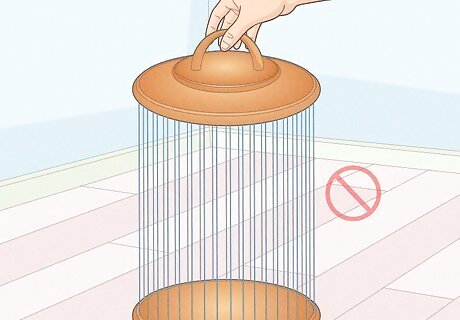
Refrain from purchasing a round cage. Budgies become stressed in cages that do not provide corners for them to hide. Round cages are often smaller for household convenience but aren't suitable. Purchase a rectangular cage instead.

Look for a cage made of sturdy material. Budgies are capable of chewing certain materials and can utilize their beak to escape. Wire, metal, or stainless steel cages offer that extra bit of security. Examine the cage to ensure there are no hazards or sharp edges on the wiring of the cage. Avoid cages made of lead or zinc, which can be harmful to your bird.
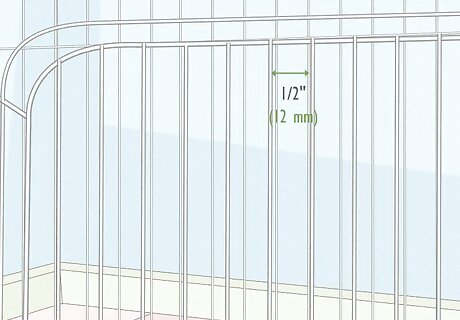
Ensure that the bars of the cage are appropriately spaced. 12mm or ½ in is an ideal space measurement for the grids of the cage. Anything larger and your budgie will be able to get stuck between the spacing of the bars, or escape. Avoid parallel bars where your budgie might be able to slip their foot into a tight gap. The wires of the cage can run vertically or horizontally.

Purchase a cage with a secure door that locks. Budgies are intelligent and inquisitive birds that can utilize their beaks to open the door of their cage if it isn't secure. Doors that slide up and down are not a suitable choice, as budgies can easily escape by lifting the door up.
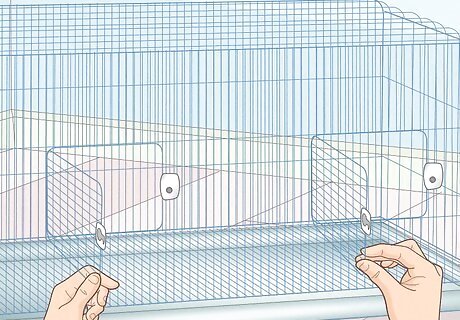
Ensure the cage has easy access. You will likely be keeping this cage for many years ahead. It's important to ensure the cage has easy access for you to be able to reach in the cage, refill the food and water station, and clean. Does the tray easily slide out? Is the door big enough for your hand to enter? Check where the perch and food bowl is positioned. Do not have a perch that is hung above the food bowl, as your budgie's droppings will likely end up in their dish.
Setting Up the Cage
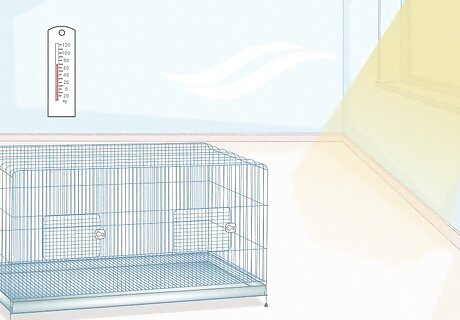
Place the cage in a suitable location. Place your budgie's cage in a well-ventilated, temperature-controlled room that is out of direct sunlight. Choose a room that is secured away from small children and other household pets.Warning: Do not place your budgie next to a window. If your budgie spots a predator, such as a neighborhood cat or another bird, they will become scared and feel unsafe in their home.

Line the bottom of the cage with newspaper. Newspaper or paper towels should be lined at the base of the cage to catch any droppings or waste. Clean the lining every other day. Do not use cat litter, sand, wood shavings, or other materials for the bottom of the birdcage.
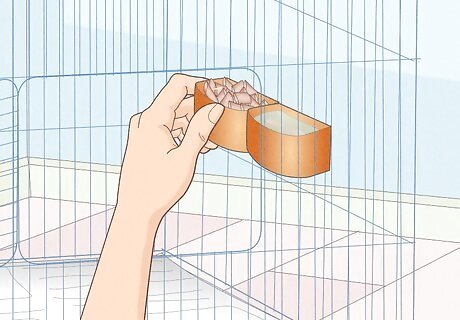
Place a food and water cup inside the cage. At least one food cup is needed, and one water cup. These cups can be placed on the side of the cage for convenience and should be refilled daily.
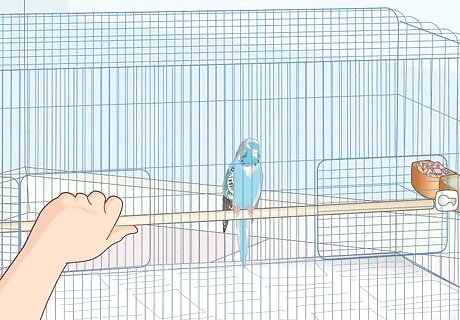
Provide your budgie with at least one perch to sit on. A good set-up should have multiple perches placed near the top of the cage to encourage exploring and movement. At least one perch should be higher or lower than the other perches for the birds to jump up and down. Natural tree branches can be good alternatives if they are strong enough for the birds to stand on.
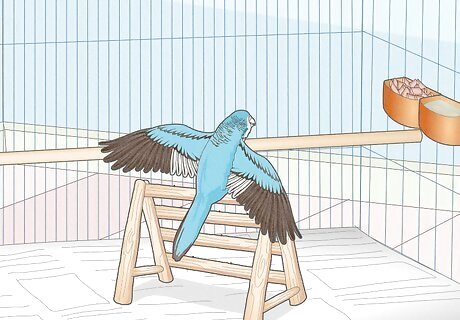
Place safe toys inside the cage. Toys are essential to keep your budgie mentally stimulated, encourage enrichment and play, and to reduce boredom. Budgies like toys such as bells, ladders, swings, and mirrors. Purchase some green clips to hang treats on the side of the cage, such as greens, millet, and cuttlefish.











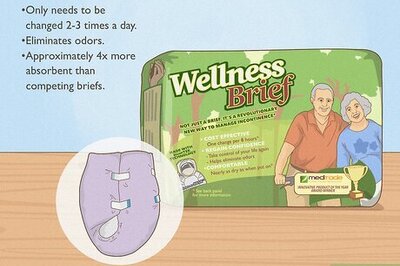


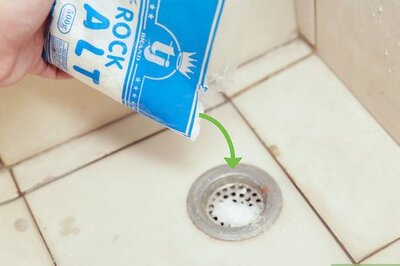



Comments
0 comment